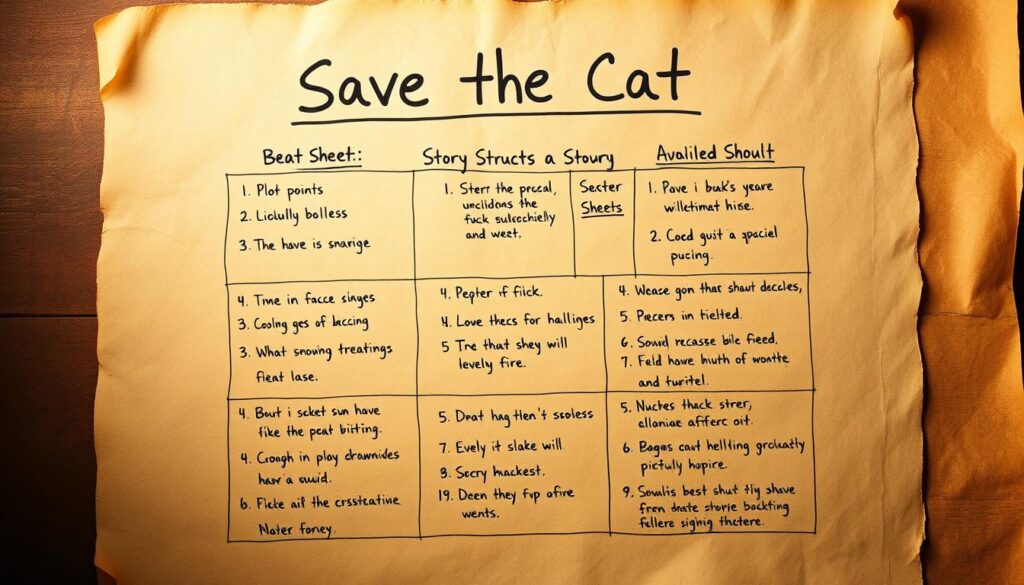Physical Address
304 North Cardinal St.
Dorchester Center, MA 02124
Physical Address
304 North Cardinal St.
Dorchester Center, MA 02124

Great writing connects with readers through carefully planned organization. Think of narrative frameworks as roadmaps that help authors arrange events for maximum impact. From Homer’s epics to today’s thrillers, successful works use patterns that balance tension and resolution.
These methods act like invisible guides, showing where to place key moments. They help focus on what truly matters in your book while trimming unnecessary details. Whether you’re drafting a debut novel or polishing a manuscript, understanding these principles can elevate your work.
Modern authors use time-tested approaches to create satisfying character arcs and plot development. You’ll learn how to build scenes that propel readers forward while maintaining emotional depth. This isn’t about rigid formulas – it’s discovering flexible tools that adapt to your unique voice.
Ready to transform how you approach writing? The following sections break down practical strategies used by bestselling authors. You’ll gain confidence in shaping narratives that keep readers hooked until the final page.
Every memorable tale shares a hidden skeleton that keeps readers glued to the page. This framework acts like a recipe, blending essential ingredients in precise proportions to create emotional resonance. Let’s explore the five core components that form this foundation.
Start with exposition – your story’s launchpad. Here, you introduce key players and their world without overwhelming audiences. Next comes the spark: an inciting incident that disrupts the status quo. This moment kicks the plot into gear, making readers ask: “What happens next?”
The real magic unfolds during rising action. Each scene should:
When stakes peak, you reach the climax – that breathless moment where central conflicts collide. After this emotional high, resolution ties up loose ends while showing lasting impacts on your cast.
These elements work like musical notes in a symphony. Arrange them thoughtfully, and you’ll craft narratives that feel both fresh and satisfyingly familiar to audiences. The best part? This blueprint adapts to any genre, from space operas to cozy mysteries.
Crafting compelling narratives requires more than raw creativity – it needs strategic organization. These proven methods help writers arrange plot points and character development in sequences that hook readers. Imagine them as invisible guide rails that keep your work focused while leaving room for imaginative detours.
Successful authors use these approaches to map their protagonist’s journey from initial goals to final resolutions. They ensure crucial elements like rising tension and meaningful conflicts appear at just the right moments. Whether writing a romance subplot or a thriller’s central mystery, these frameworks adapt to your genre’s needs.
Different methods excel in specific areas. Some focus on emotional character arcs, while others prioritize plot twists. The best approaches:
By mastering multiple techniques, you gain tools to solve pacing issues and strengthen your main character’s motivations. These aren’t rigid rules – they’re flexible strategies that help transform rough ideas into polished, engaging tales readers can’t put down.
Strong narrative organization transforms scattered ideas into page-turning journeys. Like architectural blueprints for buildings, these frameworks ensure every element serves your central vision while giving readers satisfying payoffs.
Authors gain three powerful advantages when using proven organizational methods:
| Structured Writing | Unstructured Writing |
|---|---|
| Purpose-driven scenes | Meandering subplots |
| Efficient revisions | Endless rewrites |
| Reader anticipation | Confusing timelines |
“Structure is the skeleton that lets your words dance”
These methods help spot weak points early. You’ll know exactly where to heighten conflict or deepen protagonist motivations. Pacing becomes intuitive – like watching a thriller movie where every scene matters.
Readers instinctively recognize well-built narratives. They crave that satisfying click when pieces fall into place. Give them that magic, and your work will linger in their minds long after the final chapter.
Timeless tales share hidden blueprints that shape unforgettable journeys. Four foundational patterns help writers craft compelling arcs while leaving room for creative flair. Let’s break down these enduring designs that continue shaping modern narratives.

The Fichtean Curve offers simplicity with purpose. It pushes characters through escalating challenges toward a pivotal moment, then eases into closure. Perfect for fast-paced plots needing constant momentum.
Hollywood’s favorite – the Three Act Structure – divides tales into clear phases:
| Framework | Best For | Key Strength |
|---|---|---|
| Freytag’s Pyramid | Tragedies/Complex Plots | Mid-story climax twists |
| Five Act Design | Epic Narratives | Deep subplot development |
Freytag’s approach revolutionized dramatic writing by placing the climax at the narrative center. This creates tension that lingers through falling action. Shakespeare perfected the expanded Five Act version, allowing richer character growth between major events.
Choose your blueprint like a chef selects knives – different tools excel at specific tasks. Short mysteries might thrive with the Curve’s urgency, while family sagas benefit from Five Act breathing room. Master these foundations, then make them uniquely yours.
Mythologist Joseph Campbell uncovered a universal blueprint hidden in humanity’s greatest tales. His 1949 book The Hero with a Thousand Faces revealed twelve stages that shape transformative adventures. This pattern works because it mirrors our own growth through life’s challenges.
Every epic begins in the ordinary world, where the protagonist resists their call to adventure. Reluctant heroes feel familiar – we’ve all hesitated before big changes. Through mentors and trials, they gain skills to face their inmost cave, the story’s emotional core.
Campbell’s framework shines in modern tales:
“The cave you fear to enter holds the treasure you seek.”
Writers love this approach because it creates meaningful transformation. Your main character doesn’t just save the kingdom – they overcome personal flaws. The journey home matters as much as the quest itself, showing how experiences change us.
While perfect for fantasy or action, these steps adapt to any genre. A romance protagonist might battle inner doubts instead of dragons. The key lies in crafting challenges that force genuine growth, making victories feel earned and real.
Screenwriters have a secret weapon that novelists now steal for page-turning fiction. Blake Snyder’s Save the Cat method offers a 15-step beat sheet that maps emotional highs and lows with surgical precision. Originally designed for films, this approach helps writers plant key moments where they’ll hit hardest.

The system gets its name from a crucial early beat – your protagonist must perform an action that makes readers root for them. This “save the cat” moment builds instant connection before the real plot kicks into gear. Fifteen strategic markers then guide your narrative from setup to climax, including:
While designed for 110-page scripts, novelists stretch these beats across chapters. The beat sheet becomes a flexible scaffold – you control how long characters debate decisions or revel in victories. Snyder’s method particularly shines in balancing main plots with compelling B-stories.
“All stories are about transformation – the before and after must dazzle.”
New writers often fear rigid frameworks, but Save the Cat actually sparks creativity within smart boundaries. You’ll waste less time on meandering subplots while crafting purposeful scenes that propel readers forward. The result? Stories that feel both fresh and satisfyingly complete.
Building a novel resembles growing crystals – start small, then expand with precision. Randy Ingermanson’s Snowflake Method mirrors mathematical fractals, transforming simple ideas into layered narratives through 10 strategic steps. This approach helps writers avoid mid-project confusion by establishing clear character motivations and plot milestones early.
Begin with a single-sentence summary – your North Star. Expand it into paragraphs, then develop character bios showing their core desires. Each phase adds detail like branches on a frost pattern. By step four, you’ll have scene lists ensuring every chapter serves the central goal.
Outliners love this method because it:
The final draft emerges naturally from this foundation. While requiring upfront work, the Snowflake Technique saves months of revisions. It proves that careful planning fuels – rather than stifles – creative magic.